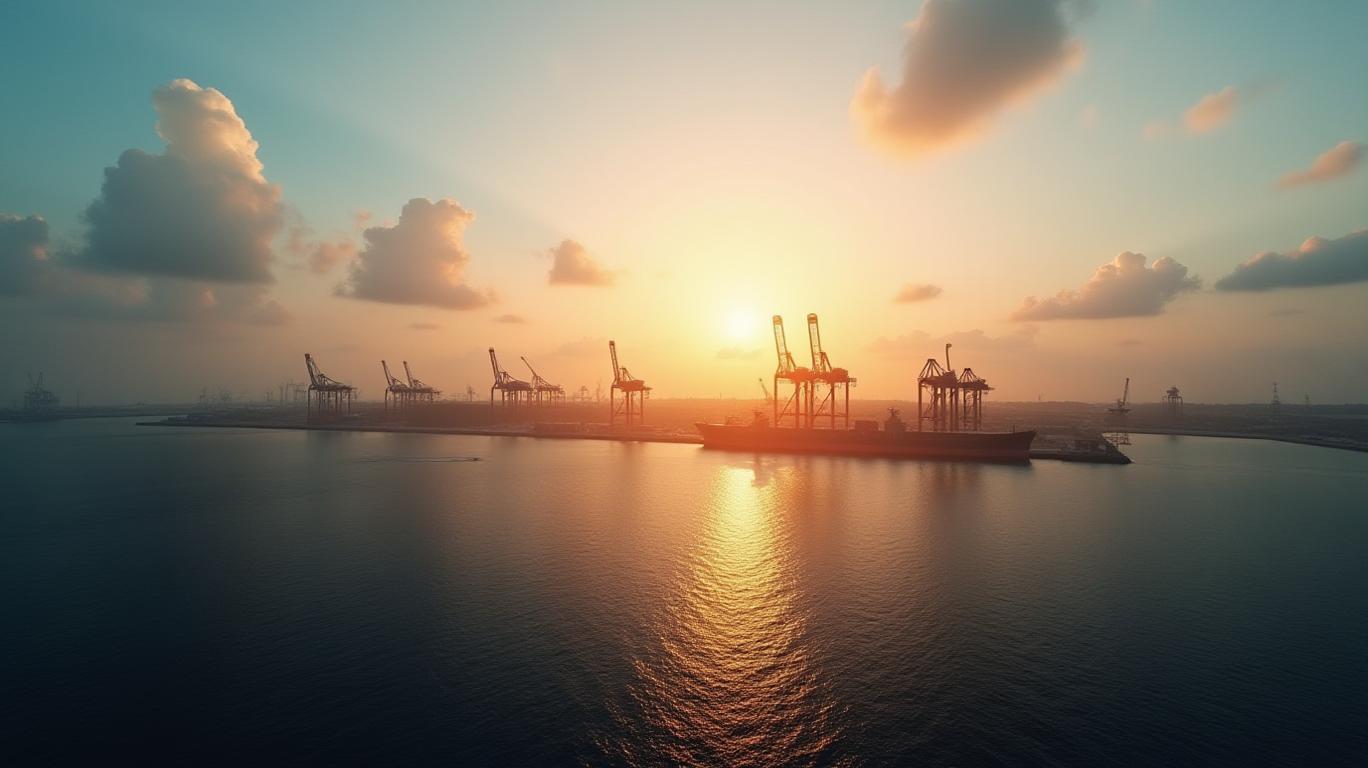Darwin Port: A Geopolitical Pivot Point for Strategic Asset Reallocation
The Port of Darwin, Australia's northernmost deep-water port, has emerged as a flashpoint in the escalating U.S.-China strategic rivalry. With Cerberus Capital Management, a U.S. private equity giant, positioning itself to acquire the port from its current Chinese-owned operator,
, this transaction is no ordinary business deal. It is a microcosm of a broader geopolitical shift: the reallocation of critical infrastructure assets from foreign control to Western-aligned entities, driven by heightened security concerns and the imperative to counter China's influence in the Indo-Pacific. For investors, this represents a rare opportunity to capitalize on a structural trend—strategic asset consolidation—that is here to stay.
Darwin Port's Strategic Value: A Geopolitical Linchpin
Located just 140 kilometers south of the Indonesia border, Darwin Port is uniquely positioned to serve as a logistics hub for U.S. military operations. Since 2011, it has hosted rotational U.S. Marine and naval deployments under the ANZUS alliance, with plans to expand its role under the AUKUS security pact. The port's deep-water facilities and proximity to the South China Sea make it indispensable for resupplying U.S. submarines, aircraft carriers, and joint exercises with Australian forces.
Infrastructure assets in geopolitically critical regions have outperformed broader markets by 22% since 2020, reflecting investor recognition of their strategic value. Darwin Port's potential acquisition by Cerberus fits squarely within this trend, as it aligns with Western nations' push to secure control over ports, energy networks, and data hubs.
Cerberus's Motivations: Profiting from Geopolitical Realignment
Cerberus, known for its long-term, value-driven investments, sees Darwin Port as a “buy-and-hold” asset with dual appeal: strategic utility and long-term growth. The port's 99-year lease, acquired by Landbridge in 2015 for AUD 540 million, has been transformed from a money-losing entity into a profitable gateway for trade with Southeast Asia. Cerberus's bid likely aims to capitalize on this turnaround while positioning itself as a partner to U.S. and Australian defense planners.
But the firm's interest goes beyond balance sheets. By acquiring Darwin Port, Cerberus would become a key player in a U.S. strategy to “de-risk” critical infrastructure from Chinese ownership. This aligns with bipartisan Australian policy: Prime Minister Anthony Albanese has pledged to reclaim control of the port by 2025, citing national security concerns. A Cerberus-led buyout would satisfy this objective while avoiding the legal and diplomatic quagmire of expropriating Landbridge's stake—a move that could trigger costly arbitration under China-Australia investment treaties.
Albanese's Policy Stance: National Security Trumps Profit
The Australian government's resolve to repatriate Darwin Port reflects a hardening stance toward foreign ownership of critical assets. Under the Albanese administration, infrastructure deemed “of national importance” is now subject to stricter foreign investment review, with a clear bias toward domestic or Western investors. This policy, paired with the AUKUS submarine deal and plans to expand U.S. basing rights in the Northern Territory, signals a deliberate shift toward strategic autonomy.
Defense contractors like Lockheed Martin, which supplies equipment to both U.S. and Australian forces, have seen their valuations rise as regional tensions escalate. Investors in defense equities are betting that military modernization and infrastructure upgrades—such as expanded port facilities at Darwin—will dominate government spending for years to come.
China's Resistance: Legal Battles and Diplomatic Pressure
Beijing has framed Australia's push to reclaim Darwin Port as a betrayal of contractual obligations. Chinese Ambassador Xiao Qian has labeled it “ethically questionable,” emphasizing Landbridge's compliance with Australian law and its AUD 1.5 billion in infrastructure investments. Yet behind this rhetoric lies a stark reality: China cannot afford to lose Darwin Port without signaling vulnerability in its “String of Pearls” strategy to control maritime chokepoints.
The stakes are existential for Landbridge, which has refused to sell. A legal clash looms, with potential claims under the China-Australia Bilateral Investment Treaty. However, investors should not overstate this risk. Australia's bipartisan consensus on national security—combined with U.S. support—ensures the tide is turning against Beijing's economic footholds in critical assets. The outcome will likely mirror similar U.S. pushes to divest Chinese firms from ports near the Panama Canal: a messy but inevitable shift toward Western control.
The Investment Case: Infrastructure and Defense Equity Plays
The Darwin Port saga crystallizes a compelling investment thesis: geopolitical risk is driving the reallocation of strategic assets, and investors who act now can secure outsized returns. Here's how to play it:
Infrastructure Funds Focused on Defense-Critical Assets:
Consider funds like the Global X US Infrastructure Development ETF (PAV), which invests in companies building or managing ports, railways, and energy grids. These assets are prime targets for governments seeking to “de-risk” their supply chains.Defense Sector Leaders:
Companies like Raytheon Technologies (RTX) and Northrop Grumman (NOC), which supply logistics and communication systems for U.S. military operations in the Indo-Pacific, stand to benefit from expanded Darwin Port activity.Australian Infrastructure Stocks:
The S&P/ASX 200 Infrastructure Index includes firms like Macquarie Group (MQG), which manages ports and utilities. Their valuations are poised to rise as Australia accelerates infrastructure investment to meet defense needs.Private Equity Exposure:
Investors can indirectly access deals like Cerberus's bid through funds like Blackstone's Global Infrastructure Fund, which targets stakes in strategic assets globally.
Darwin's strategic value is already boosting the region's economy, with infrastructure spending expected to grow at 6% annually. Investors who move quickly can secure exposure to this boom before valuations catch up to fundamentals.
Conclusion: Act Now—The Geopolitical Tide Is Turning
Darwin Port is more than a port; it is a symbol of the U.S.-led push to reallocate critical assets in response to China's rise. Cerberus's bid, if successful, will set a precedent for how Western capital can align with national security priorities while delivering superior returns. For investors, the message is clear: the era of passive ownership of strategic infrastructure is over. The time to act is now—before geopolitical realignment becomes a fait accompli.

Comments
No comments yet